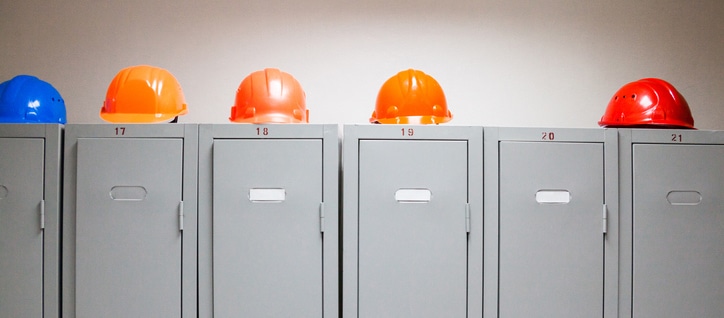In the past few years, construction has seen a major boom all across the U.S. In 2020, the construction industry will be one of the fastest growing industries, according to the Bureau of Labor Statistics and a report from Timetric’s Construction Intelligence Center (CIC).
Despite the increased growth, record high spending, and an influx of projects, construction companies are experiencing a major shortage of workers that is hurting the industry.
Many experts attribute the shortage to an aging workforce, increasing worksite injuries, low employee morale, and an overall lack of appeal to younger workers.
Our HSE Advisor Nathan Ziegeman shared insight to why the labor shortage has affected the industry, and we researched how safety professionals can help combat it.
Construction is booming, but where are all the workers?
On a recent project that Ziegeman worked on in the U.S., he revealed that construction companies were hiring inexperienced and unprepared workers because they were desperate to fill positions. The lack of experience and unfamiliarity of the job, plus poor training, increased injuries among new workers. Most of the new workers were in their early twenties, and on the job for less than a couple of months.
“There is a boom of pipeline construction projects,†says Nathan. “But these companies aren’t competing for contracts, they’re competing to find qualified workers.â€
The labor shortage tops the industry’s biggest concerns for 2019 according to  Jerry Howard, the president of the National Association of Home Builders. A staggering 78% of construction companies say that they are having a hard time filling positions for their projects. With nearly 300,000 open construction jobs each month, construction companies plan to make increasing their workforce one of their biggest priorities.
These companies aren’t competing for contracts, they’re competing to find qualified workers.
Nathan Ziegman, Remote Medical International HSE Advisor
The labor shortage is also hurting the  economy, including the housing market. 37% of contractors said the labor shortage raised the costs of bids and contracts, and others also say it prolonged the amount of time it takes to complete projects, according to the same survey from the NAHB. The labor shortage plays a big part in the increasing cost of construction and the price of new homes.
Why aren’t workers joining the construction industry?
Construction companies express that the biggest challenge is that the younger generation of Americans show little interest in working in the construction industry.
63% of young Americans say that there is little to no chance that they would consider working in construction, according to a survey taken from Builder Online. The big cultural push to encourage teenagers to attend college instead of working blue collar jobs is what leads to a labor force in construction that is increasingly aging and sees an increased risk for injuries.
On average, those in the construction industry are older than workers in the rest of the economy. According to the Bureau of Labor Statistics, the median age of construction workers has reached 42.6. Only 1.8% of the industry’s workers are between 16 and 19 years old, while fewer than 9.4% are younger than 25. The result of an older workforce means that construction companies are seeing an increase in injuries and time away from work.
Musculoskeletal disorders in construction workers rose from 6.4% in 1992 to 11.5% in 2014 among workers aged 55 to 64, according to a report from Reuters. Another finding from the Survey of Occupational Injuries and Illnesses show that the median days away from work for all construction workers are 13 days. However workers aged 45 to 54 averaged 20 days away, 21 days away for workers 55 to 64 years old, and 37 days away for those 65 and older in the same year.
Furthermore, the industry has seen an increased number of worker deaths in construction. According to data released by the Bureau of Labor Statistics, worker fatalities continue to see an increase with one in five of all workplace deaths occurring in construction.
Employee morale also impacts the productivity in construction. Research conducted by McKinsey & Company showed that in 2015, lost productivity in construction has cost companies over two trillion dollars. Long hours, poor professional development, and insufficient risk management all contribute to low morale. Â
What can safety professionals can do to help attract and retain talent?
Improving the overall well-being and morale of workers are effective ways to reduce injuries on-site, while also retaining talent. When workers are alert, well hydrated, not overworked, and getting enough sleep, they make smarter and safer decisions. Construction companies are providing access to better health benefits and additional wellness programs to improve the health and safety of their workforce.
Proper health benefits give workers and their families access to frequent health check-ups, reducing the chance of on-site injuries and time-off. Companies can include wellness programs for workers to help attract and retain talent. Programs often include activities such as stretching exercises, fitness classes, encouraging proper nutrition and eating habits, and more.
Construction industries also need to retain talent to help keep up with project demand. Companies are investing in more training and professional development programs to help equip workers with the necessary skills for the job, and improve their professional growth.
“Effective short service employee programs are an excellent way for construction companies to add new or inexperienced workers to their roles,†according to Nathan. “These programs give new workers the tools, training, and mentoring they need to perform their duties, while preventing incidents or injuries.â€
These programs are for new workers who have less than six months of experience in construction. The purpose is to properly train, educate, and inform new hires, temporary workers and subcontractors about the job. This helps to prevent injuries and potential hazards while on the job site. They also help coworkers feel valued, and keep them happy while on the job.
Effective short service employee programs are an excellent way for construction companies to add new or inexperienced workers to their roles.
Nathan Ziegman, Remote Medical International HSE Advisor
To make the construction industry more attractive for younger workers, many construction companies are focusing their recruitment efforts on students and teenagers. In addition, construction companies are raising pay to make open positions more lucrative and hire more talent.
From a survey taken by the Associated General Contractors of America, nearly six in 10 respondents said they had increased base-pay rates, while 29% are including incentives or bonuses, and nearly one-quarter of companies raised contributions or improved employee benefits.
Safety professionals can combat the crisis by offering better benefits, programs, and training for new and current workers to increase appeal, reduce turnover, and improve worker productivity and safety.
If you would like to learn more about how our health and wellness programs can help attract and retain talent in the construction industry, contact us today.


